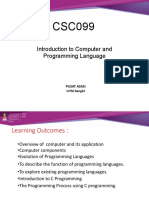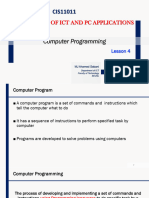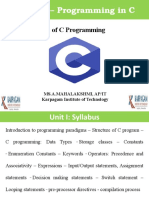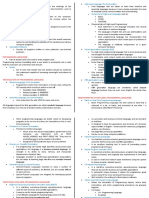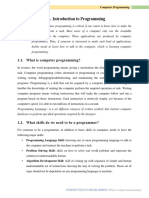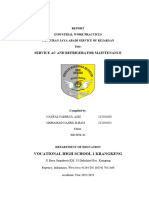0% found this document useful (0 votes)
80 views51 pagesChapter 1
The document discusses computer programming languages. It provides an overview of computer components and the evolution of programming languages from machine language to modern high-level languages. It describes how programming languages have progressed from low-level machine and assembly languages to high-level languages like C, C++, Java, and Visual Basic to make programming easier for humans. It also gives brief introductions to some popular modern programming languages.
Uploaded by
Abdul Ashraf RasidCopyright
© © All Rights Reserved
We take content rights seriously. If you suspect this is your content, claim it here.
Available Formats
Download as PDF, TXT or read online on Scribd
0% found this document useful (0 votes)
80 views51 pagesChapter 1
The document discusses computer programming languages. It provides an overview of computer components and the evolution of programming languages from machine language to modern high-level languages. It describes how programming languages have progressed from low-level machine and assembly languages to high-level languages like C, C++, Java, and Visual Basic to make programming easier for humans. It also gives brief introductions to some popular modern programming languages.
Uploaded by
Abdul Ashraf RasidCopyright
© © All Rights Reserved
We take content rights seriously. If you suspect this is your content, claim it here.
Available Formats
Download as PDF, TXT or read online on Scribd
/ 51


